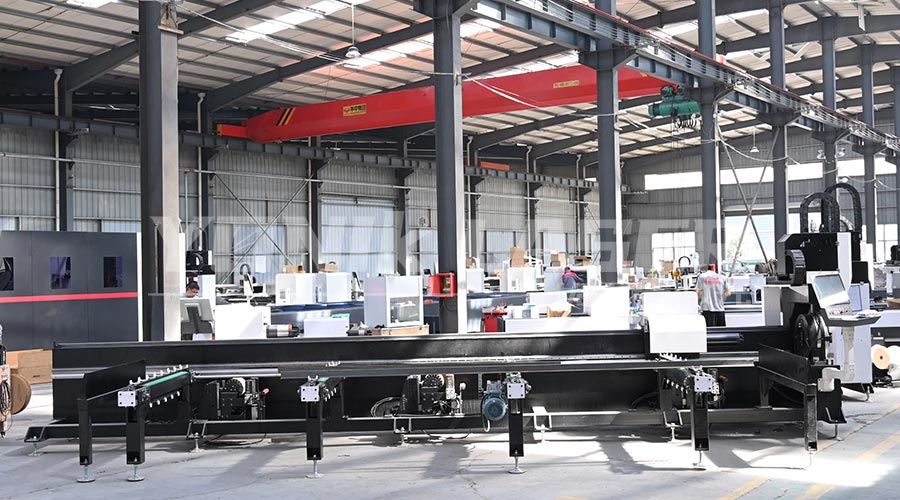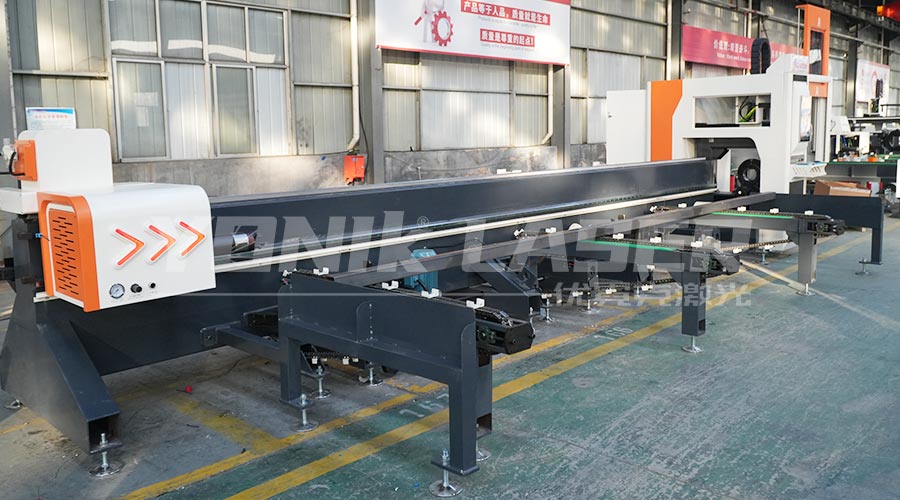In today's manufacturing industry, which is advancing towards intelligence and precision, laser cutting machines have become core equipment in fields such as metal processing, aerospace, and automotive manufacturing, thanks to their advantages of high precision, high efficiency, and low energy consumption. However, even with mature laser cutting technology, issues related to cutting quality may still arise in actual production due to improper parameter settings, equipment maintenance, or operation. This article will systematically reveal common problems in laser cutting processing and provide targeted solutions to help enterprises enhance production efficiency and product quality.

I. Rough Cutting Edges or Dross Adhesion: Comprehensive Optimization from Parameters to processes
Problem Manifestation: The cutting edges exhibit burrs, granular hard dross, or melted adhesion, affecting the surface quality of the workpiece.
Root Causes:
Power-Speed Imbalance: Insufficient laser power or excessive cutting speed prevents the material from fully melting; conversely, excessive power or slow speed can lead to over-melting.
Focal Length Deviation: Inaccurate focal position (e.g., deviation from the material surface or thickness center) results in uneven energy density distribution.
Improper Gas Pressure: Insufficient auxiliary gas (e.g., oxygen, nitrogen) pressure fails to blow away molten dross, while excessive pressure causes turbulent airflow.
Nozzle and Lens Contamination: A clogged nozzle or dirty focusing lens reduces laser beam quality, leading to energy loss.
Solutions:
Dynamic Parameter Adjustment: Match power, speed, and gas pressure according to material thickness and type. For example, when cutting 3mm stainless steel, use 1500W power, 64mm/s speed, and 0.8-1.2MPa nitrogen pressure for burr-free cutting.
Precise Focal Length Calibration: Determine the focal position using the "dot test" method to minimize the spot diameter. For carbon steel cutting, the focus is typically located one-third of the thickness below the material surface.
Regular Optical System Maintenance: Clean the protective lens weekly and inspect the focusing lens reflectivity monthly. Replace lenses if reflectivity decays by more than 15%.
Optimized Gas Management: Check gas pressure gauges daily and replace filter elements every three months to prevent impurities from affecting airflow stability.
II. Slanted or Non-Perpendicular Cutting Surfaces: A Dual Challenge of Mechanical Precision and Process Control
Problem Manifestation: The cutting cross-section appears V-shaped or slanted, causing assembly difficulties, especially in precision component processing.
Root Causes:
Mechanical Errors: Worn guide rails, lead screws, or loose drive belts cause deviations in the cutting head's motion trajectory.
Material Deformation: Warped or uneven sheet metal prevents the laser beam from perpendicular incidence.
Process Parameter Conflicts: Mismatched power and speed or improper energy control during piercing.
Solutions:
Enhanced Mechanical Stability: Lubricate guide rails with specialized grease every 500 hours, regularly check belt tension (deflection controlled at 6-8mm), and calibrate the machine tool coordinate system.
Material Preprocessing: Use a leveling machine to eliminate internal stress in the sheet metal before cutting, ensuring flatness within ±2mm.
Multi-Stage Process Control:
Piercing Stage: Reduce power to 60%-70% and extend gas blowing time to minimize dross accumulation.
Cutting Stage: Utilize "slow start + intelligent end" functions to avoid energy concentration at corners. For example, corner overburning in carbon steel plates can be resolved by adjusting the power curve or adding circular overcutting.
Intelligent Assistance Functions: High-power equipment (e.g., 30kW fiber laser cutting machines) can incorporate "overcut compensation" technology to automatically correct cutting path deviations.
III. Declining Cutting Capacity: Full-Link Troubleshooting from Laser Source to Cooling System
Problem Manifestation: The equipment fails to cut materials of specified thickness or experiences a significant reduction in cutting speed, affecting production rhythm.
Root Causes:
Laser Aging: Laser tube lifespan decay leads to insufficient output power.
Cooling System Failure: High water temperature or insufficient flow triggers laser thermal protection shutdown.
Optical Path Contamination: Coating detachment on lenses or optical path misalignment causes energy loss.
Solutions:
Laser Maintenance: Regularly test laser power and contact the manufacturer for gas recharging or module replacement if power decay exceeds 20%. For instance, one enterprise increased cutting speed from 8m/min to 12m/min by replacing the laser tube.
Cooling System Optimization: Maintain water temperature at 20-25°C and water flow ≥3L/min. Clean the water circuit quarterly to prevent clogging.
Optical Path Calibration: Use a "red light indicator" to check for optical path misalignment, ensuring coaxiality error between mirrors and focusing lenses is <0.05mm.
Gas Purity Control: For stainless steel cutting, nitrogen purity must be ≥99.9%, and oxygen purity ≥99.5% to avoid efficiency reduction from impurities.
IV. Frequent Equipment Alarms or Shutdowns: Collaborative Diagnosis of Electrical Systems and Software
Problem Manifestation: Sudden alarm codes (e.g., E01, E02) or automatic shutdowns occur during cutting, disrupting production.
Root Causes:
Electrical Failures: Loose wiring, sensor malfunctions, or drive overload.
Software Conflicts: Outdated control card firmware or incorrect parameter settings.
Environmental Interference: Electromagnetic interference or temperature fluctuations affect equipment stability.
Solutions:
Electrical System Troubleshooting:
Check if the Z-axis limit switch is loose or if the sensor is contaminated with metal debris.
Use a multimeter to test high-voltage power supply output voltage, ensuring stability within ±1%.
Software Upgrades and Parameter Resetting:
Obtain the latest control card firmware from the manufacturer to fix known bugs.
Recalibrate the machine tool origin and import standard process parameter libraries (e.g., for cutting 6mm aluminum, set power to 4000W and speed to 18m/min).
Environmental Control:
Install shielded cables to reduce electromagnetic interference and maintain workshop temperature at 15-35°C.
Add a sunshade to the chiller to prevent reduced cooling efficiency in summer.
V. Challenges in Cutting Special Materials: Combining Process Innovation with Equipment Selection
Problem Manifestation: Low cutting efficiency and issues like dross adhesion or excessive heat-affected zones when processing highly reflective materials (e.g., copper, aluminum) or composites.
Root Causes:
Material Properties: High reflectivity of copper and aluminum requires higher energy density for melting.
Equipment Limitations: Traditional CO₂ lasers struggle with highly reflective materials, while fiber lasers offer superior performance.
Solutions:
Equipment Selection: Prioritize high-power fiber laser cutting machines (e.g., ≥20kW) equipped with ultra-high-speed piercing functions.
Process Optimization:
Copper Cutting: Use "pulse piercing + low-frequency modulation" technology with power set to 8000W and frequency at 500Hz to reduce dross.
Aluminum Cutting: Employ high-purity nitrogen (≥99.999%) and reduce cutting speed to 60% of that for stainless steel.
Assistive Technologies: Incorporate "intelligent end" functions to automatically reduce power at the end of cutting, preventing end dross accumulation.

Conclusion: Transitioning from Reactive Maintenance to Proactive Prevention
The stable operation of laser cutting machines relies on the three-dimensional synergy of "process-equipment-maintenance." Enterprises should establish standardized operating procedures (SOPs), such as:
Daily Inspections: Check gas pressure, cooling water temperature, and lens cleanliness.
Weekly Maintenance: Lubricate guide rails, clean exhaust ducts, and back up system parameters.
Monthly Training: Organize operator training on fault case libraries to improve emergency response capabilities.
By implementing systematic prevention and precise maintenance, enterprises can elevate Overall Equipment Effectiveness (OEE) to over 85%, gaining a competitive edge in the market. The evolution of laser cutting technology is endless; only through continuous process optimization, equipment upgrades, and talent development can enterprises unlock the infinite potential of advanced manufacturing.
2025-07-22
2025-07-21
2025-07-19